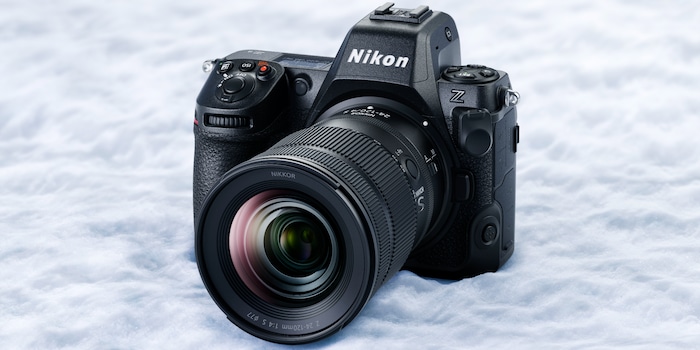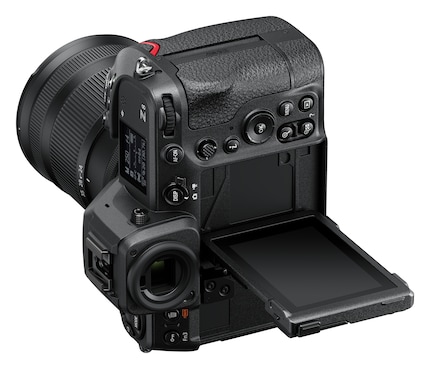
Nikon Z8
45.70 Mpx, Full frame

Here it is: the camera that many Nikon users have been waiting for. The Nikon Z 8 can do practically everything the Z 9 can do, but weighs and costs less.
A professional camera can do so much that it is hardly possible to list everything. In the case of the Nikon Z 8, I can keep the description simple: It's the Z9 in small.

Nikon Z8
45.70 Mpx, Full frame
What does that mean in detail? The most important key data:
The sensor, which the Z 8 inherits from the Z 9, is currently the fastest in full-frame format. Neither camera has a mechanical shutter, which is not necessary at this readout speed: the rolling shutter effects that are annoying with slow sensors are practically imperceptible with an electronic shutter. The electronic shutter has several advantages: Faster shutter speeds are possible, here up to 1/32 000 second, there is no wear and tear and no vibrations, and it also works with video.

The autofocus, also inherited from the Z 9, comprises 493 points, 405 of which are used for automatic focusing. This allows you to define your own focus areas. The Z8's subject tracking recognises faces and eyes not only on people, but also on various animals, including birds. It also recognises vehicles automatically.
Nikon has enhanced the performance of the Z 9 with firmware updates. These features are also available in the Z 8. These include the 120 FPS refresh rate in the viewfinder and the ability to record RAW video in the highest quality on the internal memory card. As 8.3K video is now possible at up to 60 FPS, the same maximum frame rate also applies to 4K in oversampling mode. Pre-recording for continuous shooting is also one of the new functions. The Z 8 is the first Nikon camera to support the file format HEIF in addition to JPEG and RAW. The Z 9 should catch up here with another firmware update.
The most obvious difference between the Z 8 and the Z 9 is the size. The Z9 has an integrated portrait grip with battery. This gives the camera more than twice the battery life. A portrait grip is available separately for the Z 8 - but this makes it larger than the Z9, so if you know that you will always need the portrait grip, you are better off with the Z9.
There are only a few minor differences. The Z8 has no built-in GPS. Instead of two card slots for CF cards, it has one for SD cards and one for CF cards. Unlike the Z 9, the Z 8 has no connection for flash synchronisation and no ring to select the drive mode.
The Z 8 also lacks a socket for an Ethernet cable. However, it is still possible to connect it to a LAN using an adapter. The Z 8 has two USB-C ports - one for power supply, the other for data transfer.
The Nikon Z 8 will be available from the end of May. A test report will follow.
Cover picture: Nikon
My interest in IT and writing landed me in tech journalism early on (2000). I want to know how we can use technology without being used. Outside of the office, I’m a keen musician who makes up for lacking talent with excessive enthusiasm.
From the latest iPhone to the return of 80s fashion. The editorial team will help you make sense of it all.
Show all